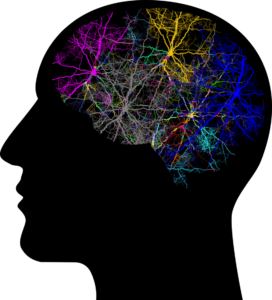OCD in Children: What Parents Need to Know
When someone seems overly concerned about being clean, others might call them “obsessive.” When a person insists on specific behaviors or requires a certain order of things, words or actions, people may say they’re “compulsive”.
 People may use the term “OCD” in an almost light-hearted manner to justify behaviors or rules which they themselves practice. But for anyone diagnosed with real Obsessive Compulsive Disorder (OCD), there is nothing light-hearted about their struggles. For them, the condition often brings distress and places limits on their every day lives to varying degrees.
People may use the term “OCD” in an almost light-hearted manner to justify behaviors or rules which they themselves practice. But for anyone diagnosed with real Obsessive Compulsive Disorder (OCD), there is nothing light-hearted about their struggles. For them, the condition often brings distress and places limits on their every day lives to varying degrees.
According to information released by the American Psychiatric Association (APA), the best estimates are that about 1.2% of the American population struggles with OCD. It occurs in adults, teens, and children and it is likely that at least a million U.S. children wrestle with OCD symptoms (OCFMC, 2006).
Other studies predict that one child or teenager out of every 200 will develop OCD (AACAP, 2013). The average age when OCD begins is 19-1/2 years old, and 1/4 of all people who were diagnosed with OCD had developed obvious symptoms by the age of 14 (American Psychiatric Association, 2013).
Parents are overwhelmed and confused when one of their children develops the symptoms or begins to live under the dark cloud of the fears that are a part of OCD.
It’s difficult to know what to do when a child has an emotional meltdown or battles with someone who has (probably without realizing it) interfered with a “necessary” order of items and actions.
It should be good news to know that effective treatment is available. Parents should begin by learning all that they can about OCD with the goal of becoming better able to understand what a child with OCD is facing and how and where to find the right help. Newport Beach Christian Counseling can guide parents through this process, offering the support needed to find the right resources and treatment for their child’s needs.
What is Obsessive Compulsive Disorder?
OCD is a mental health issue that is diagnosed by looking for genuine obsessions and/or compulsions.
Obsession: Obsessions may be defined as urges, thoughts, or images that intrude on a person’s mind and life in a way that becomes difficult or impossible to ignore (APA, 2013). For example, someone can become a germophobe. A child may become driven to seek perfection. Another lives with the constant fear of harming themselves or others.
Compulsion: Compulsions, on the other hand, are behaviors or mental acts that a person is driven to repeat again and again. Compulsions may grow out of obsessions (APA, 2013). People with OCD find themselves compelled to continually wash their hands, perform special rituals, engage in what is known as “checking” behaviors, count things, or even pray because they believe they must.
When a person suffers from OCD, they carry out certain acts (compulsions) to try to relieve anxiety or tension (American Psychiatric Association, 2013). Often the anxiety for which the person desperately wants relief is driven by an obsession. The compulsive behavior brings a measure of relief but it’s only temporary, so when the anxiety returns, the person must perform the action again to get relief. This develops into a cycle where relief from the anxiety reinforces the need to repeat the compulsive behavior in order to experience another brief period of relief.
 The obsessions and compulsions are often connected, such as germophobia and washing one’s hands. Or, a student is so afraid of failing that he or she keeps on checking and checking his or her test answers even to the point of missing recess or lunch.
The obsessions and compulsions are often connected, such as germophobia and washing one’s hands. Or, a student is so afraid of failing that he or she keeps on checking and checking his or her test answers even to the point of missing recess or lunch.
In other cases, the obsessions and compulsions may not seem to be related. Think, for example, of a child who counts a certain number of cracks in a sidewalk thinking it will keep his mother from being hurt. So, a diagnosis of OCD does not always mean that the obsessions and compulsions are related. A child may have one without the other.
How OCD develops and manifests itself can also vary. Also, the focus of obsessions and compulsions shift over time. For some people, obsessions and compulsion come out more obviously and intensely when they are under stress (APA, 2013). Those same people may experience fewer or less intense symptoms in situations where stress levels are low. And often, when one obsession or compulsion is eliminated, others may change.
True OCD symptoms are not simply small irritations. They consume a major portion of the time in a child’s day. Further, they may increase a child’s level of stress, bringing layers of problems.
For example, a germophobic child may wash their hands to the point that they become dry and cracked, and may even start to bleed. Then, he or she may also become terrified of being around sick people or having physical contact with someone who has even been close to a sick person.
This can disrupt relationships, or bring on peer harassment if the fears or behaviors become known. Brothers and sisters may feel rejected by the child who struggles with germophobia because he or she may avoid giving hugs or express fear which the siblings may take personally.
OCD not only affects the person who struggles with the obsessions and compulsions, but also impacts their family and friendships. Then the OCD sufferer feels shame over their compulsive behaviors. A child’s need to carry out these compulsions often builds more shame. The emotional distress that often comes with OCD can become so heavy that depression also develops.
OCD in Children: Catching it Early
Early warnings of OCD in children may go unnoticed. Children may find certain behaviors embarrassing and may try to hide them. But parents who observe some of the following in their child’s life may have reason to seek further assistance in checking out the possibility of OCD (OCFMC, 2006; AACAP, 2013):
1. Repetitive behaviors (washing their hands over and over, touching things in a specific order, anxiously rechecking school work, or repeatedly checking doors, etc.
2. Continuous fears that become extreme (such as unusual fears surrounding germs or dirt, or anxiety about the well being of the family).
3. Often repeated statements that go beyond reasonable concern and obsessively express worry outcomes that do not necessarily follow. “I must touch [this object] 10 times so that my sister will still like me” or “When I fail to pray a certain way, our team loses.”
4. Habits and behaviors beginning to get in the way of normal life or friendships.
5. Needing reassurance too much and too often (“will I be okay if…?”; “will it be okay…?”).
6. Constantly compulsion to carry out an action until everything feels “correct.”
7. Often driven to confess bad thoughts, like sexual imagery or thinking unkind thoughts about other people.
8. Avoiding more and more activities not connected to obsessions or compulsions
9. Always seeming to be behind (because obsessions and/or compulsions demand time).
10. Increased physical symptoms of anxiety, such as headaches and stomach aches.
What Causes Obsessive Compulsive Disorder?
As is typical of much of the world of mental illness, the exact causes of OCD are still largely a mystery. In fact, a number of different factors acting in combination, including environmental and biological factors, may be behind a child’s OCD.

The Diagnostic and Statistical Manual of Mental Disorders, 5th Edition (DSM-5), states that for those individuals who have a member of their immediate family that has OCD there is a 200% greater likelihood that they will develop OCD over those whose first-degree relatives are not OCD (APA, 2013).
What’s more, they also found that when the immediate family member has experienced childhood-onset OCD, the likelihood of developing OCD increases by 1000%. Other possible causes of OCD include significant life transitions (divorce, changing schools, etc), abuse, and loss (AACAP, 2013; APA, 2013).
Whatever the cause may be in a given instance, it has become clear that OCD has a significant effect on the brain. Brain scans have shown differences in brain activity between people who have OCD and those who do not (Scharwtz, 2016).
OCD may also have physical causes, so an evaluation by a medical professional is always a good idea. Physical causes may be addressed to help reduce contributing factors. For example, Pediatric Autoimmune Neuropsychiatric Disorders Associated with Streptococcal (PANDAS) can trigger a sudden and severe onset of OCD or tic disorder symptoms (National Institute of Mental Health, 2016). In these cases, the streptococcal infection would require medical treatment.
Helping Your Child
If your child exhibits symptoms of OCD, there are a number of ways to find help and give good support.
- Get immediate professional help and counsel. There is no reason for you to try to handle this alone!
- Don’t fall into the trap of merely using reassurance as your tool to try to calm your child. This is not an effective way to reduce the symptoms nor does it teach your child to fight and manage them.
- Don’t try to avoid everything that your child fears or is obsessed by since this only tends to reinforce their symptoms.
- Give your healthy coping skills, like memorizing relevant Bible verses, relaxation techniques, evaluating the rationality of their thoughts, soothing activities, and learning to live in the moment. Stress tends to trigger and magnify symptoms, so being able to use effective stress management tools makes a real difference.
- Demonstrate how to set proper boundaries. These can help your child handle stress.
- Teach your child how to take care of themselves, like eating healthy foods and getting enough sleep,
 Teach your child to recognize their obsessions and compulsions. Knowledge is a power.
Teach your child to recognize their obsessions and compulsions. Knowledge is a power.- Do not shame! There may be no logic behind OCD symptoms, but they are quite real and your child is not to blame.
- Provide a time and place for your child to express and process negative feelings, like embarrassment and shame, that go along with OCD symptoms.
- Find support for yourself and a place to process your own feelings about your child’s OCD symptoms. You may experience frustration and fear, along with any number of other difficult but typical emotions. Learn to take care of yourself so that you can take care of your child.
Treatment for OCD in Children
To confirm a diagnosis of OCD in children, parents should seek an evaluation by an experienced mental health professional. The DSM-5 states that OCD left untreated unlikely to go away and the symptoms will fluctuate as time goes on (APA, 2013).
Several different therapies exist for treating OCD in children. Cognitive behavioral therapy (CBT) is one of the most recommended. One kind of CBT applied quite often is known as Exposure and Response Prevention (ERP).
Much like it sounds, ERP is a type of therapy where a patient is taught not to act on any compulsion in order to ease their anxiety. Counselors will then teach a child various tools to deal with the difficult emotions.
Though the idea of asking a child not to use his or her compulsive behaviors in the face of anxiety may sound frightening, therapy can be paced so that anxiety does not become unmanageable.
Other methods of CBT, include “imagined exposure” and learning to overcome negative and illogical thinking patterns. For some children, play therapy may be a part of treatment.
Along with counseling medical, evaluation is crucial. A medical professional can help determine whether medication might help.
It may also be necessary to ask your child’s school for any help or support they may be equipped to offer. You should talk to your counselor about this.
Remember, you need not try to parent your OCD child alone! Reach out to a counselor at Newport Beach Christian Counseling today to ask questions and discuss the many options available for support and treatment.
There is hope and healing!
“Jenga,” courtesy of Michel Parzuchowski, unsplash.com, CC0 License; “Brain”, Courtesy of GDJ, Pixabay.com; CC0 License; “Tablet Time”, Courtesy of Annie Spratt, Unsplash.com, CC0 License; “Knowledge is Power”, Courtesy of Geralt, Pixabay.com, CC0 License;




